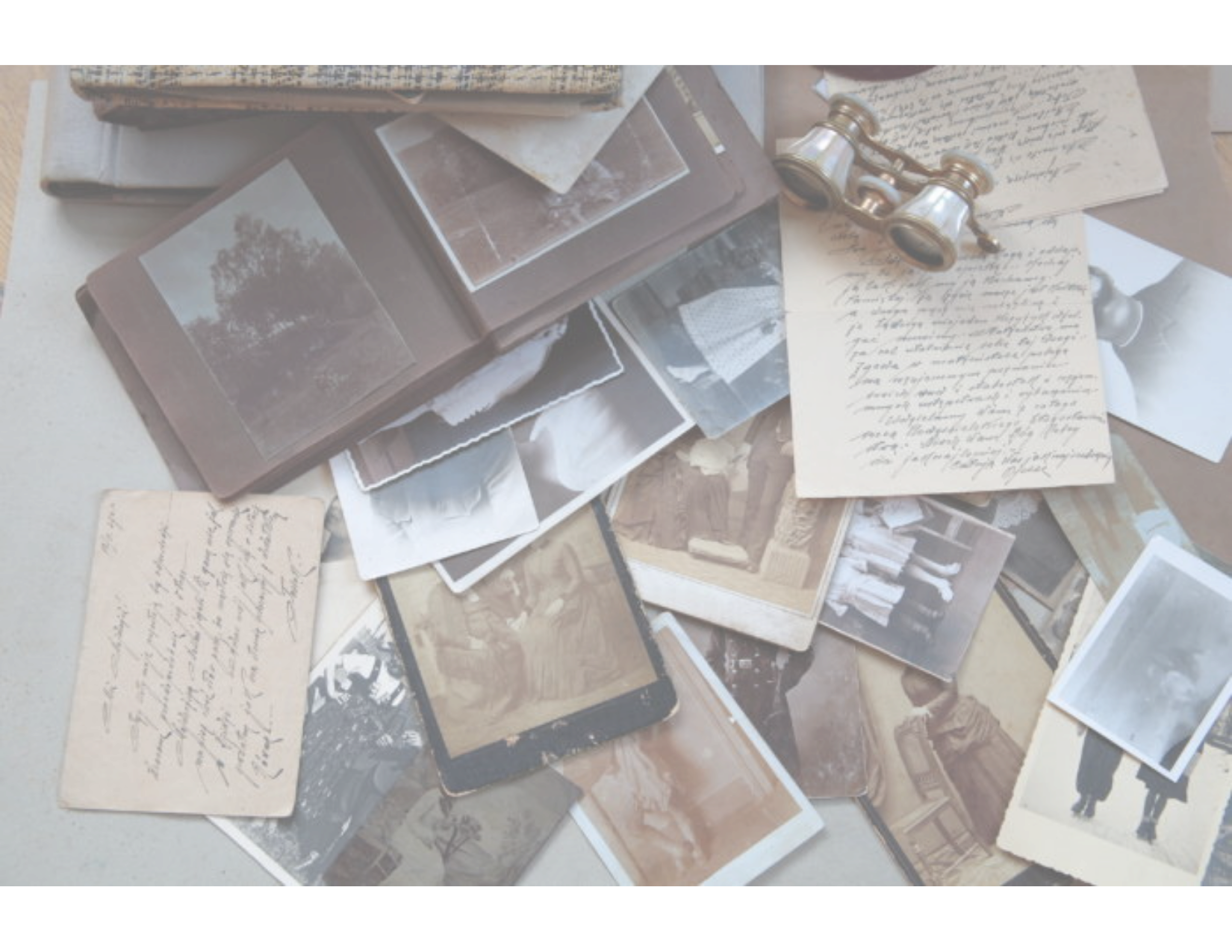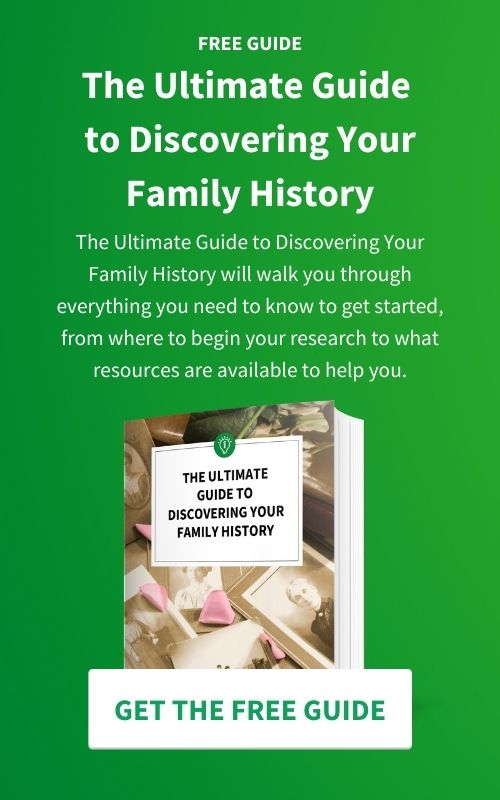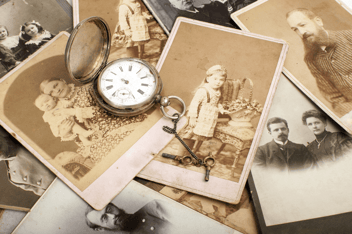50 Family History Facts
Do you ever feel curious about the stories of your ancestors and the path that led to you? Exploring your family history can be an exciting and rewarding journey, connecting you to your roots and giving you a better understanding of your family's past. But where do you begin? With so much information out there, it can be overwhelming to know where to start or how to overcome obstacles in your research. That's why I've compiled 50 intriguing family history facts, tips, and resources to help you get started on this amazing adventure. From uncovering the origins of your family name to discovering the different professions your ancestors had, this guide will provide you with the necessary tools to discover the unique and captivating story of your family history. So let's dive in together and discover the incredible world of genealogy!
The Origins Of Your Family Name and Ancestral Names
Have you ever wondered about the origin of your family name? Perhaps you've heard stories about how your ancestors received their names, or maybe you have no idea where your surname comes from. Either way, discovering the meaning and history behind your name can be a fascinating starting point for exploring your family's past. In this section, we'll delve into the different ways surnames have been formed throughout history and provide some helpful resources to uncover the origins of your own family name.
- The vast majority of surnames in France originate from patronymic names, which are based on the father's given name. For example, "Pierre" + "son of" = "Peterson."
- In Italy, many last names end in "-i," which indicates that the person is from a particular place. For instance, someone with the surname "Romi" is likely from Rome.
- A common German suffix for surnames is "-mann," meaning "man." This was often used to distinguish between two people with the same first name (e..g., Jürgen Schmidt and Jürgen Müller).
- Many Scottish surnames are derived from Gaelic words or phrases describing personal attributes. One example is Cameron ("crooked nose"), while another is Stewart ("steward"). They also come from where they lived like "Trevorrow", meaning "the land".
- Naming patterns were also observed by your ancestors. Are you aware that the most traditional naming patterns for Scottish boys were:
- The family's first son was named after his paternal grandfather
- The second son was named after his maternal grandfather
- The third son was usually named after his father
Similarly, for Scottish girls, it was common to see:
-
- The family's first daughter was named after her maternal grandmother
- The second daughter was named after the paternal grandmother
- The third daughter of the family was named after her mother
- Be aware of the naming "rules" of the church as well. In one of the projects, I was looking to find out why this ancestor's name was changed when he immigrated to Canada. I hit a dead end in trying to find him. Knowing the name of his spouse, and aware in Quebec women kept their maiden name, I was able to trace her back to learn that when her husband migrated to Quebec, he had to convert to Catholicism and the church gave him a new name. My search was then more successful.
- Going back eight generations, most people will have a whopping 256 ancestors. This is called an “outbred” family tree. Charles Habsburg, however, known as Charles II of Spain (1661–1700), was so inbred he had only 29 ancestors, and he suffered from great physical disabilities as a result.
- When taking a DNA test, you and your siblings can have differing amounts of certain ethnicities, even if you’re full siblings. This is because of genetic inheritance and its naturally random way of dishing out the gene percentages. So, if you and your brother are part of Scandinavian heritage, you could be twenty percent Scandinavian while your brother could be forty-five percent (or vice versa).
Where Your Ancestors Came From
Your ancestors come from all over the world. They may have been born in Europe, Africa, Asia, or the Americas. Each region has its own history and culture that your ancestors brought with them when they came to America. Here are some things you may not know about your ancestor's homeland:
- Europe is a large continent with many different countries. Your ancestor may have come from England, Ireland, Scotland, Wales, Germany, Italy, France, Spain, or another European country.
- Africa is the birthplace of humanity and home to many diverse cultures. If your ancestor was from Africa chances are they were born in one of the following regions: North Africa (which includes Egypt), West Africa, East Africa, Central Africa, or Southern Africa.
- Asia is the largest continent and home to more than half of the world’s population.
- When researching your family in other countries, you must pay attention to name changes and borders. For example, middle European countries like Poland had their boundaries changed between Germany and Russia due to wartime events.
- Ship passenger lists for immigrants coming into America can give you a wealth of information about your ancestors, including their height, hair colour, occupation, general health, and how much money they had on them when they came to the U.S. But the records can sometimes give your research an extra kick by telling you the name of their nearest living relative in their home country, as well as the town from which your relative travelled to sail to the United States.
What Your Ancestors Did For A Living
Your ancestors were hard workers! They worked in fields, factories, and homes to provide for their families. Here are some facts about what your ancestors did for a living:
- In the 1800s, many Americans worked as farmers or farm labourers. This was a difficult life with long hours and backbreaking work.
- During the Industrial Revolution of the late 1800s and early 1900s, millions of Americans found jobs in factories. These jobs were often dangerous and paid very little money.
- Today, most Americans work in service industries such as healthcare, education, or retail sales. We enjoy much safer working conditions than our ancestors did but sometimes face other challenges such as unpredictable schedules or low wages.
- Include in your research some sidebar research on the various jobs in the lifetime of your ancestors and what these jobs could be today. In one of my family searches, my ancestor was a teamster. My current knowledge regarded a teamster as a factory worker or truck driver. After my research, my ancestor drove a horse and wagon transporting supplies.
What Historical Events Your Ancestors Were Involved In?
Your ancestors were likely involved in a number of historical events, but you may not know what they are. Here are some things to look for when researching your family history:
- Wars – Many families have members who served in various wars throughout history. This is especially true if you have ancestry from Europe or America. Look for military records and stories passed down through the generations to learn more about your ancestor’s role in these conflicts.
- Mass Migrations – Migrations can be large-scale, like the Irish Potato Famine or small-scale, like moving west during America’s frontier days. Either way, research how and why your ancestors decided to move to get a better understanding of their lives at that time period.
- Religious persecution - In many parts of the world, people have faced religious persecution because of their beliefs. If you come from one of these families, learning about how they coped with this hardship can give you insight into their strengths and character.
What Interesting Facts You Can Find About Your Ancestors.
Your family’s history can be fascinating. You may not know much about your ancestors, but with a little research, you can find out some interesting facts about them. Here are three things you might not have known about your family’s past:
- Your ancestors were probably smaller than you are. The average height of adults has increased over the last few centuries due to better nutrition and healthcare. However, this increase is relatively recent—before the Industrial Revolution, most people were shorter than they are today. So if you measure up at below-average height, don’t worry—it just means you come from stock that predates modern conveniences!
- Life expectancy was significantly lower in previous generations. It’s hard to believe now, but even as recently as the early 20th century, life expectancy was significantly lower than it is today—about 50 years for men and 54 years for women on average in developed countries. This difference is largely due to advances in medicine and public health; prior to these advancements, many people died young from preventable diseases or accidents. If any of your relatives lived into their 60s or 70s, they were considered “long-lived ”! Today, such an age isn’t particularly remarkable. Still, it gives us pause to think how different our lives would be if we only had half as long to enjoy them!
- Many of your female ancestors didn't live long enough to have children. For most of human history (and prehistory), childbirth was very dangerous for both mothers and babies —in fact, it's estimated that around 30% of all births ended in death before the advent of modern medicine. That means that for every 10 babies born alive, 3 died during or shortly after birth. Most maternal deaths occurred during labour itself; others resulted from postpartum hemorrhage (excessive bleeding)or infection. Childbed fever was also a common killer: this disease – often contracted while giving birth– claimed the lives of countless women (and their newborn infants ) throughout history. Thankfully, medical advances have made childbirth much safer for mothers and babies alike: according to UNICEF, 99% of all maternal deaths, today could be prevented with access To quality healthcare during pregnancy and delivery.
- Some birthing patterns show that the average birth is every 18 months to 2 years (if not less). When you are searching for your ancestors and see a large gap between children it is possible there was a death of an infant. If you dig deeper you may find a record of this infant, but in many cases, the death may not have been reported.
Interesting Facts about Marriage
- People married themselves — without a priest or witnesses. Before the Marriage Act of 1753 in England, a priest and witnesses were unnecessary for marriage — couples married themselves. Lord Hardwicke ruled that marriages required a ceremony to be “official” and that couples under the age of 21 needed parental consent to marry.
When looking for marriage records and you have exhausted your search within Church records and county records, it could be possible they could have married themselves and no records will be found. - Parents sometimes arranged marriages between their kids… and dead people. Do you think your dad has unusual taste in marriage partners? Try being set up with the deceased spirit of a child within the same family or clan — in an effort to, again, strengthen familial ties. While the norm hundreds of years ago was for children to leave their future love life to their parents and hope they were lucky enough to exchange vows with someone they at least liked, imagine the disappointment in finding out your wife or husband wouldn’t even be alive to help pitch in with household duties.
- The marriage “kiss” is more loaded than you think. We want to kiss our partners after we are declared “husband and wife/husband and husband/wife and wife” because we love them. End of story. But the reason for the kiss stems back to ancient Rome when kissing was considered an acceptable way to seal legal contracts. Only in Italy.
- Wives could be dumped if they were infertile. Long before doctors learned that men, too, can be infertile, it was perfectly acceptable for husbands to leave their wives if they found them incapable of having children, which is totally lame. The Christian Church was one of the first to decide marriage did not have to result in reproduction — but, interestingly, a marriage could be dissolved if a man was incapable of having sex with his wife.
- Common names create their own challenges. In one of my ancestral searches, I wasn't able to find out what happened to "Mary". After a while, "Mary" reappeared in the records. I thought maybe she wasn't at the home during the previous census taking. After careful scrutiny, the second "Mary" was not the same.
Interesting facts about the research process you should know
- Interview as many living relatives as possible. Most genealogists recommend that when you start your research journey you interview as many living relatives as possible to get initial information. So, if you haven’t begun your research yet, or you’ve yet to interview your relatives. When the older generation passes, so do a lot of the family stories and the history.
- Keeping a Research Log will save you time in the long run. It took me a while to realize the importance of keeping a record of my research. If you are not logging your work it is very easy to go over the same ground more than once. It can be really frustrating to be doing some research and then getting a sense of déjà vu.
The research log can also be designed to hold your record citations as well. It is so important to cite your work. - Keeping organized. During the records collection process, you will acquire a lot of records. These need to be well organized both physically and digitally.
- Scan all physical records and then keep the hard copies in a filing cabinet. I have at least one folder for each name that I research and I file the names alphabetically. If I’m doing research for a client, I will keep those documents separately in box files.
- Develop a folder system for your digital records. For example, one family per folder, with separate folders for each member thereafter. Use a consistent file naming convention such as [ancestor's name]_[birth year]. You could use the same approach to your paper records as well.
- It is so important to back up your research. All it takes is a power surge, a flood, a fire or a theft to lose all your valuable work. I back up my work to an external hard drive. I’ve also started to use Google Drive to back up some work to the Cloud.
- Don’t use other people’s trees as sources. Many people utilize online services to document their family trees. The most common mistake made is when you just plugged this information into your tree without verifying the information. Use the tree as a guide to compare your findings. I made a mistake with same-named individuals because they were two completely different families (surprisingly they may have had a shortage of names because there were only one or two children that were different). I had to undo a lot of work to fix my tree. Check their sources, chances are if they don't have any, the accuracy of the tree would be in question.
- Families are like trees for sure, don’t just follow the direct lines, check all the branches. I made a mistake at the beginning of just tracing my direct lines. The problem with doing this is if you hit a brick wall, there is not a lot you can do. I soon realized that I could make greater progress if I also traced the families of siblings and spouses as this gives you a lot more information (see the next point) and also other options if you hit that brick wall.
- Don’t use an online tree as your only tree. Companies like Ancestry will only give you access to your records, documents, etc that you attached to the tree if you have a subscription. Use a desktop software application like Family Tree Maker to keep all your records and this program allows you to attach documents as well. Don't forget to back these up.
Conclusion
The blog post outlines 50 family history facts that you may not have known. These facts can help you to better understand your family history and where you come from. By learning about your family history, you can better appreciate your roots and the sacrifices that your ancestors made to get you where you are today. So, what are you waiting for? Start digging into your family history today and see what interesting facts you can uncover. Who knows, you may just be surprised at what you find!
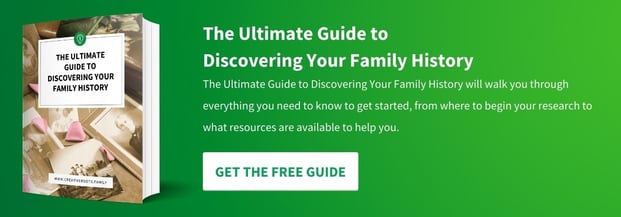
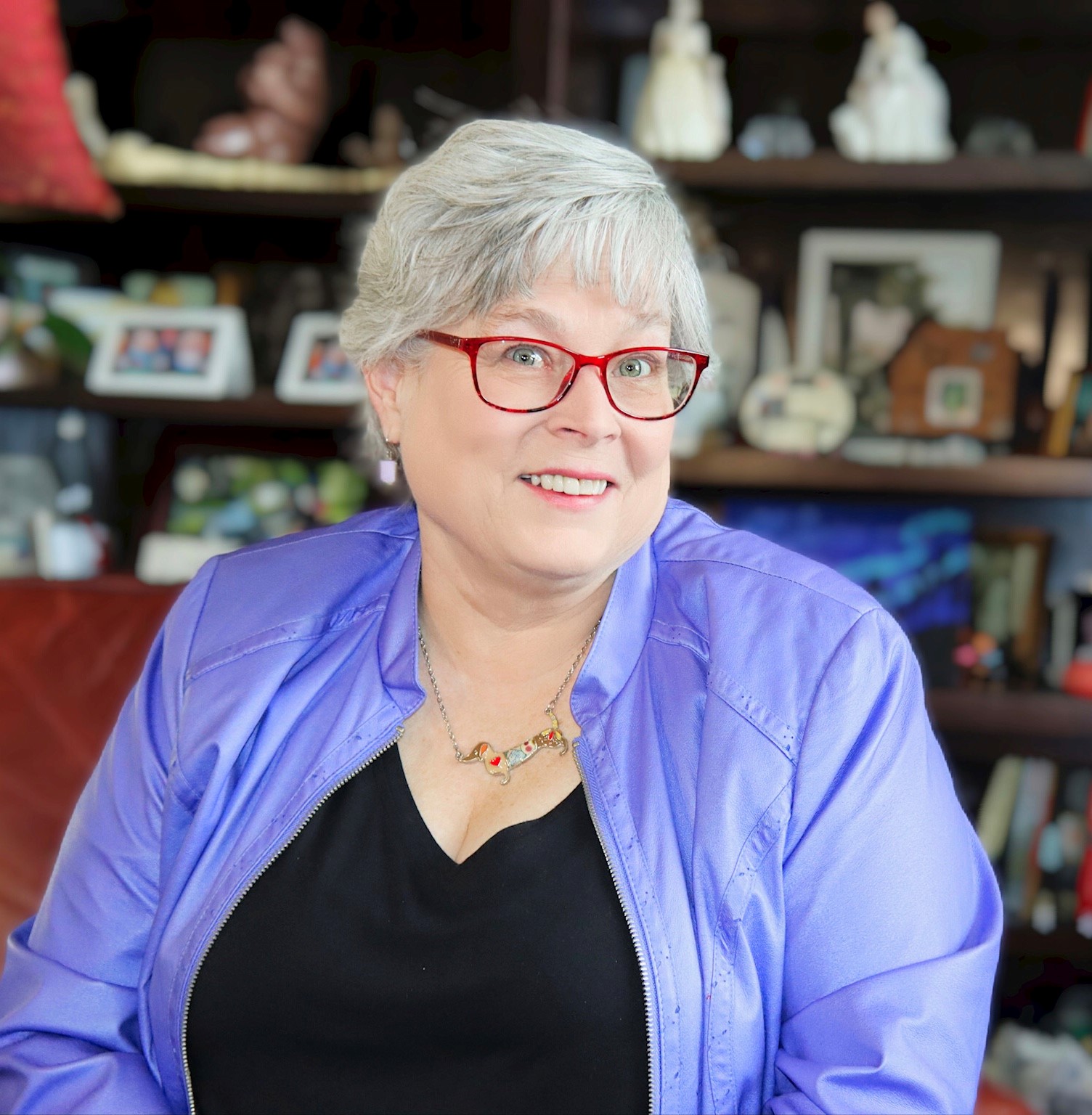
Article by Carol Walsh
Carol Walsh is the CEO of Creative Roots, a professional genealogy company. She has a passion for preserving family history and storytelling. Carol's research methodology centers around fact-finding and publishing in a format that readers can use to preserve the stories. Her ultimate goal is to help families connect with their past and each other.

